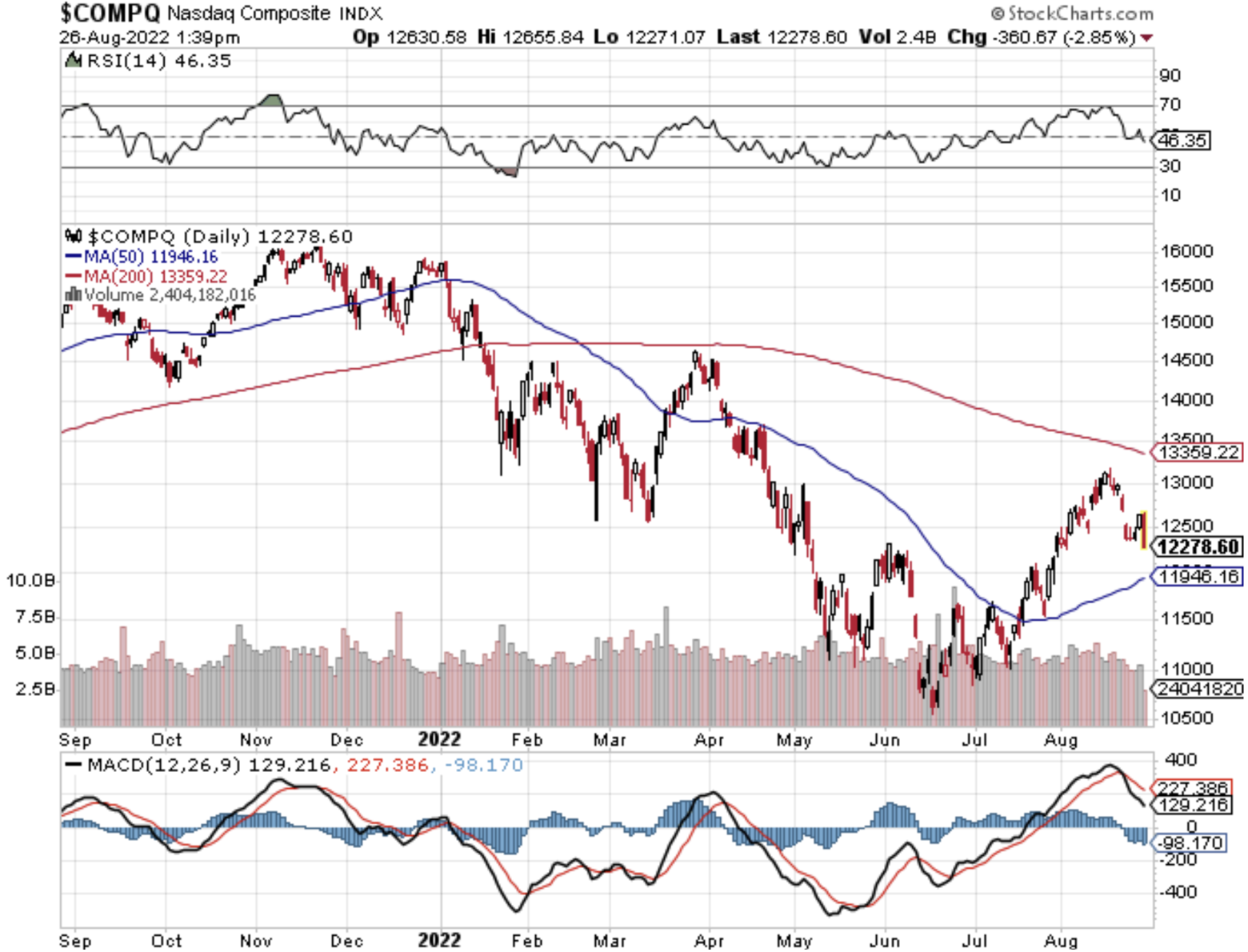Here you go with some on-demand commentary dissecting the future of tech stocks after the speech was heard around the world.
The morning of August 26th set among a stunning backdrop at the Grand Teton National Park in Jackson Hole, Wyoming, Central Bank Governor Jerome Powell delivered to us, the people, the financial speech of 2022.
I’ve been waiting all week for this blockbuster speech and had my bag of popcorn and glass of wheat grass smoothie waiting for me in front of my flatscreen to watch the one speech that certainly would move the tech market this year.
It didn’t disappoint. It was loaded with highly impactful soundbites.
The speech was exactly 8 minutes and 38 seconds, and I thought what was said had to be said.
My good friend Jerome spent about 2 minutes of that time explaining to us how the Fed is responsible for a job and how it’s not time to get complacent.
The rest, distilling down to 6 minutes and 38 seconds what was supposed to be a 30-minute speech, signaled to listeners: if the tone of the speech isn’t that positive, you might as well make it short and bitter to get it over with.
Remember that Jerome is renowned and lauded for his dovishness which has delivered us many elevated years of performance in the Nasdaq.
What’s my hot take?
Jerome came out with a largely hawkish tone and even used some stronger than usual verbiage, which is why the Nasdaq plummeted.
The Fed is on record for saying how strong the job market is and how the economy is so great, but they finally acknowledged that the job market will likely “weaken” which is a massive about-face confession.
We’ve seen about 100,000 job losses so far in Silicon Valley tech companies and even Facebook is using an algorithm to fire selected employees and high-pressuring leftover employees to increase production or face a similar cut.
Expect a tsunami of tech job losses in 2023.
Jerome also acknowledged that businesses and consumers will face upcoming “pain” which is a word I’ve never even heard him say in private let alone to the world.
He then later said that he expects a “sustained period of below trend growth” which is the “unfortunate cost of reducing inflation.”
What does this mean for tech stocks?
Inflation continues as the largest and most outsized risk to Nasdaq performance for longer and more serious than first expected.
Rates will go higher interest rates and this scenario clobbers tech companies by reducing the profits of future cash flows.
You can bet that every CFO is biting their nails now, updating their models to reflect the new reality of higher rate expectations, shrinking margins, higher expenses, and lower profits.
The driving forces behind the unrivaled inflation still exist such as the foreign military conflicts in Asia and Europe, supply chain snarls, or even China’s dystopian lockdowns. Many companies like Apple have decided to buy back stock or execute stock splits instead of investing in new businesses. EVs are having a tough time achieving production goals. Just a lot of no bueno all around.
Sadly, these external forces will continue to persist until there is some sort of solution to one or any of them.
Up until now, there hasn’t been any breakthrough, and the clock is still ticking.
Ultimately, inflation can become entrenched and it’s the Fed's job to break the back of those expectations because like how in low inflationary environments, businesses and customers set prices based on expectations of low inflation, the same rings true for high inflation and the prices set based on out-of-control inflation.
Naturally, tech companies will also feel the pain, sadly, this was a highly negative speech for tech stocks, but if the CPI can continue its downtrend, we will see a Nasdaq snapback.


